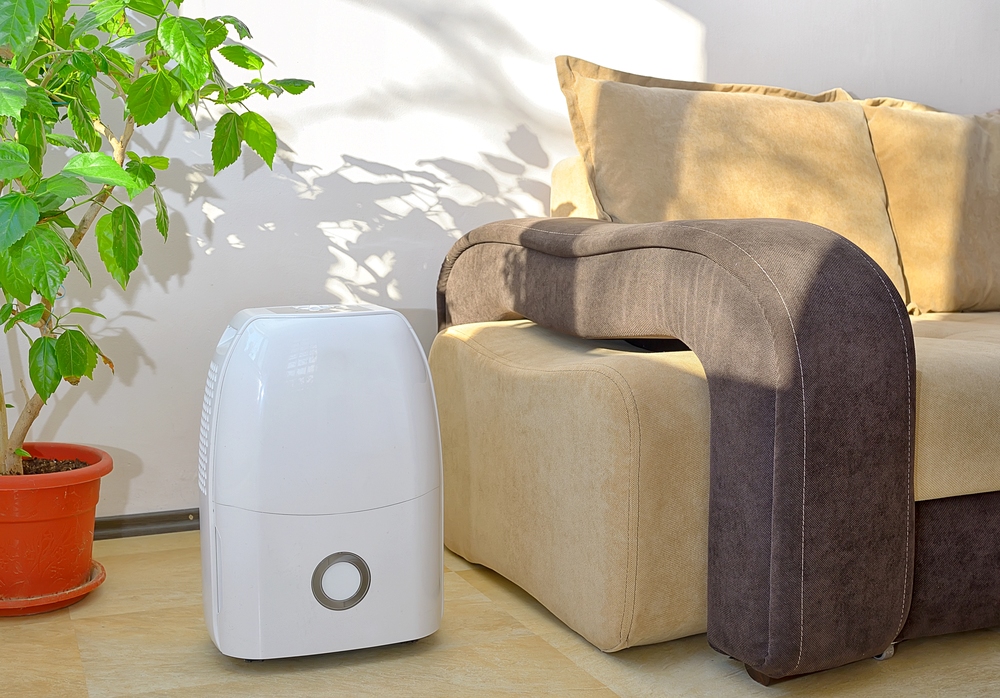With the warm summer months soon to give way to colder, wetter days, you might think it’s time to pack away your dehumidifier. Or, if it’s not something you’ve bought in the past, you probably wouldn’t consider getting one for the coming months. After all, we don’t often associate autumn or winter with ‘humid’ weather.
You might be right. However, damp thrives in our houses because of the climate we live in. Cold winters, wet weather, central heating, drying clothes indoors – all elements that add up to excess moisture being trapped indoors. If left unchecked, this moisture can create the perfect conditions for mould to spread throughout your home.
The quickest way to fight back is (you’ve guessed it) a decent dehumidifier. Having one of these in your home helps to suck water out of the air and leave your home drier, warmer, and frankly much nicer to live in.
The tricky part is figuring out which one to buy – but don’t worry…this guide will help!
Do You Actually Need A Dehumidifier?
Sometimes the signs are obvious: windows that stream with condensation every morning, laundry that takes two days to dry on the radiator, or that slightly sour smell that never seems to disappear. In other cases, the warning signs creep up much more slowly – a patch of paint that bubbles, wallpaper that lifts at the edges, or a bit of black mould in the corner of a room, almost imperceptible unless you’re actually looking for it.
If you’re not sure whether damp is a problem in your home, a little gizmo called a hygrometer can help. They’re typically quite cheap, so you may be able to find them online for under a tenner. Once you’ve got your hands on one, it’ll tell you the humidity level of a room. Anything over 50% is generally too high, and a sign that a dehumidifier could make a big difference.
Picking the Right Type
Not all dehumidifiers work in the same way, though the most common are compressor models. These work brilliantly in heated homes, and are what most people go for. They’re solid, reliable, and good at keeping living rooms, bedrooms and kitchens dry – but admittedly, their weakness is cold weather, so you may want to consider something else for the winter months.
That’s where desiccant dehumidifiers come in. Instead of cooling air, they use an absorbent material to pull moisture out, which makes them far more effective in chilly spaces like lofts, basements or conservatories. They’re lighter, and usually quieter, though they can cost a bit more to run in warm rooms.
At the smaller end of the scale are Peltier dehumidifiers, also called thermo-electric units. These are compact, whisper-quiet, and perfect for little spaces like box rooms, cupboards or even caravans. Just don’t expect them to manage a damp open-plan living area.
How Big Should It Be?
When people talk about the “size” of a dehumidifier, they’re not talking about how tall or wide it is, but how much water it can pull out of the air in a day, which could be anything from a couple of hundred milliliters right up to 20 litres.
Generally speaking, a small, one-litre machine should suit a single bedroom perfectly, but if you’ve got damp spreading across a lounge wall or condensation in multiple rooms, you’ll need something much bigger; A 10-20 litre unit is usually about right for family homes. Here’s a quick tip for you: it’s nearly always better to go a little larger than you think you’ll need. That way, you’re not forever emptying the tank, and it’ll cope when the weather gets really wet.
Features That Help
Modern dehumidifiers come with all sorts of bells and whistles, to varying degrees of usefulness, but there are a few features that genuinely make life easier, and are worth looking out for. “Laundry mode” (it might be called something else, depending on the model) is a lifesaver in winter when you’re drying clothes indoors, speeding things up and keeping damp smells at bay. A model with an automatic shut-off is another good find, since this means you won’t find the tank overflowing. Going one step further, if you can, look for a model that comes with a continuous drainage hose, which means you’ll barely have to think about emptying it at all. A built-in humidistat can also come in handy; set your preferred level, and let the machine adjust itself.
Will It Cost a Fortune to Run?
Bills are already a nuisance to pay, so the potential running costs of a good dehumidifier might cause some initial concern, or even act as an outright barrier. The truth is, while running costs do vary from one model to the next, they’re typically not as scary as you might think. A mini thermo-electric unit might cost you no more than a fiver a year. Larger compressor or desiccant models will add a bit more – somewhere between fifty and a hundred and fifty pounds, depending on how much you use them.
The nice thing is that dehumidifiers can help save you money elsewhere. Dry air heats up more efficiently, so you may find your heating bills dip. Plus, you’ll avoid spending on mould sprays, redecorating, or even replacing furniture damaged by damp. In many homes, the savings more than balance out the running cost.
Getting the Best Out of It
When you get your hands on a dehumidifier, don’t make the assumption that it’s a magic box that you can shove in a corner and forget about forever. Placement matters, and you should be looking to give it breathing space, keeping doors and windows shut while it’s on. If you’re targeting a particular damp wall or window, move it closer to the desired area. Keep on top of maintenance too – empty and clean the tank regularly, dust the filters if it has them, and it should keep working well for years.
The Bottom Line
Damp is stubborn, annoying and kind of gross, but it isn’t unbeatable. With the right dehumidifier, you can banish condensation, protect your home from damage, and make every room feel fresher and warmer. The key is picking the right type and size for your space, then letting it do its quiet, steady work in the background. As with everything, do your research before buying and make sure you pick the best option for your specific needs.
Image: Depositphotos











